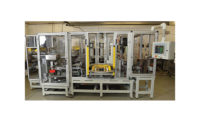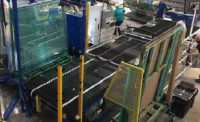With 650 employees, Bilfinger GreyLogix is among the largest automation technology design specialists in Europe. Established in 2000, the Flensburg, Germany, company specializes in large projects that require both engineering expertise and market-specific know-how. To meet the latter challenge, Bilfinger has separate design teams that focus solely on customers in the oil and gas, food and beverage, and chemical and pharmaceutical industries.
“We don’t have any standard projects, so there is no learning curve,” notes Thomas Besser, computer-aided engineering team leader for the Centre of Excellence at Bilfinger GreyLogix. “It makes [our] expertise and experience all the more important.”
One of the company’s most challenging ongoing projects is the design and assembly of complex control cabinets used by customers in different industries. These metal cabinets house a number of panels containing individual controls for automation equipment.
Initially, Bilfinger engineers manually created electrical design and switchgear engineering schematics for the cabinets. Switchgear engineering involves all devices that open and close electric circuits, especially devices that pass high currents.
Earlier this year, however, the engineers began performing this task using EPLAN Engineering Configuration One (EECO) software made by EPLAN Software & Service GmbH & Co. KG. Besser says the Excel-based software cuts schematic creation time in half, resulting in increased productivity.
EECO generates accurate wiring diagrams after the engineer enters data on parameters, such as voltage, and components, such as motors, from individually configured lists. Besser acknowledges that these diagrams still require individual adjustments, but says they offer a good foundation and save a significant amount of design time.
“You can [complete] 50 to 60 percent of the project with this automated process,” claims Besser. “[This] extra time [lets] engineers tackle [more] creative tasks.”
Cabinet assembly is a two-step process. First, housing walls are made from sheet metal on a Perforex machining center (made by Kiesling Maschinentechnik GmbH) using EPLAN Pro Panel software. This program provides all data for the mechanical processing of housing components or copper bars. It also determines the optimum routes for wires and cables, and outputs data in neutral or machine-specific format.
Each housing wall is then placed on a separate cart where specially trained assemblers carefully mount each panel. A large kanban board at the front of the factory floor displays the current production status of individual products and notes which crews (up to three people) are assigned to workstations.
Besser says that Bilfinger is so impressed with EECO software, the company plans to gradually phase it into all business operations, including software programming. “We would be able to shave off an additional 10 to 15 percent of the hours necessary for this very time-consuming task,” he concludes.
For more information on electrical engineering software, call 630-408-3863 or visit www.eplanusa.com.







